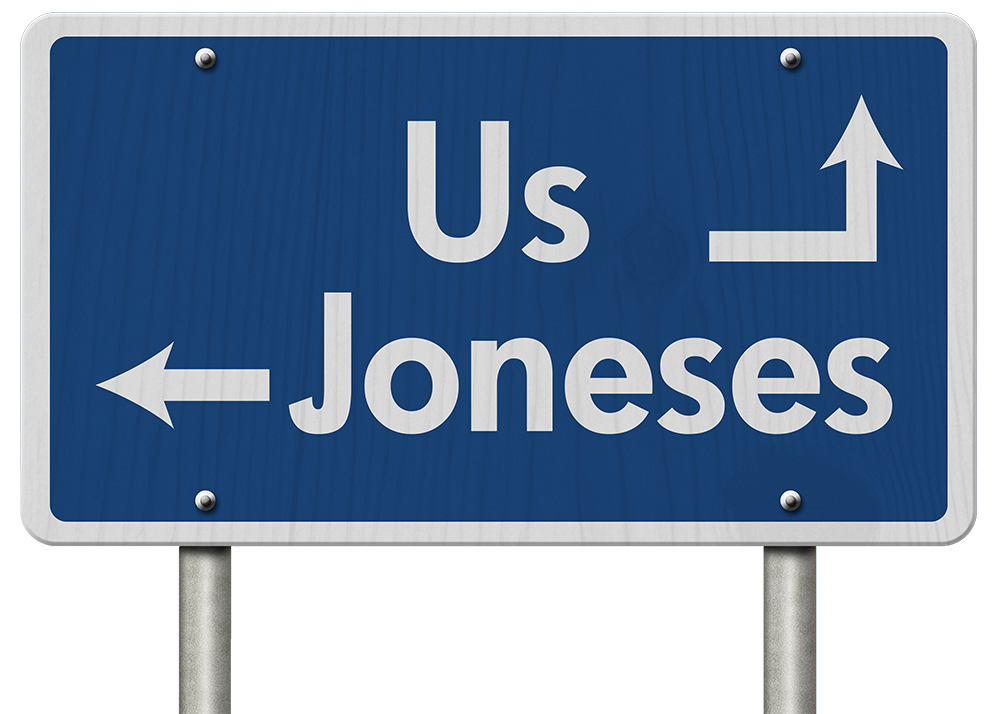Monthly Archives: March 2021
Say No to Lifestyle Inflation
What’s on your wish list? A bigger house? A new boat? An exotic vacation? As your career advances and your earning potential grows, it’s tempting to want to “upsize” your lifestyle. But before you go all in with increasing your spending, prioritize your goals and focus on what’s essential for a successful financial future.
Wants Versus Needs
It’s fun to imagine yourself in a new home. Extra bedrooms, a home theater, and a pool all sound great until you consider the real cost to your savings. Think about how much more you could end up spending in monthly mortgage costs and taxes before you make a decision to buy more house than you really need. Instead of upgrading, add the money you would have spent on higher mortgage payments to your retirement savings. Having enough money once you retire is a worthwhile objective.
Family Fun
Of course you want to give your children the best possible life experiences that you can afford. But before you spend thousands of dollars on a family vacation at an expensive distant getaway, consider whether your children would have just as rich an experience camping in the mountains or taking a road trip through several states. The money you save by scaling back the expense — but not the fun — could be used to boost your child’s college savings. And that goes for other activities, too. Shop around for the best deals on your child’s music, dance, or sports lessons, and add the savings to a college fund.
Review Your Plan
The success of any spending plan rests with your commitment to the goals you’ve set for yourself. When you conduct your annual financial review, make sure that you’re not only on track to reach your established goals but that any new goals you’ve incorporated into your plan are realistic and affordable. An increase in your income shouldn’t inflate your lifestyle if doing so would thwart your objectives or make them harder to achieve.
Contribute Now to Reduce Your 2020 Tax Bill
You can lower your tax bill and increase your retirement savings with one simple move. Making a contribution to an eligible retirement account by the April 15, 2021 income tax deadline will reduce your 2020 taxable income by the amount you contribute.
Individual Retirement Account (IRA)
An IRA offers you the flexibility to choose a variety of different investments to hold in your account. For 2021, you can contribute up to $6,000 to an IRA – $7,000 if you’re age 50 or older. You must have “earned income,” including money from wages, salaries, tips, bonuses, commissions, or self-employment, to contribute to an IRA. Your spouse can contribute to an IRA as well. Additionally, employees, incomes below $75,000 ($124,000 for couples) are eligible to make traditional IRA contributions and still claim the deduction.
SIMPLE IRA
A “Savings Incentive Match Plan for Employees,” or SIMPLE IRA, is a retirement savings plan designed for small businesses with 100 or fewer employees. Employees can set aside up to $13,500 in 2021 ($16,500 if age 50 or older). Employers must either match employee contributions dollar for dollar – up to 3% of an employee’s compensation – or make a fixed contribution of 2% of compensation for all eligible employees, even if an employee chooses not to contribute. As with a traditional IRA, you can make a contribution to a until April 15 following the end of the tax year and benefit from the tax deduction.
Solo 401(k)
Solo 401(k) plans are designed to cover a business owner with no employees and his or her spouse. You can make elective deferrals of up to 100% of your earned income, up to the annual contribution limit in 2021 of $19,500 ($26,000 if age 50 or over), plus employer non-elective contributions of up to 25% of compensation. The maximum amount you can contribute to a Solo 401(k) for 2021 is $58,000 ($64,500 if you’re age 50 or older). Contributions can be made to the plan up until the company’s tax return deadline, including extensions. Your financial and tax professionals can help you determine which plan is right for you.
Cultivate Your Financial Smarts
When there’s a lot going on in your life, you might be tempted to put thinking about your finances on the back burner. But that’s never a good plan. Improving your financial outlook can be as easy as laying down – and following – a few simple ground rules.
Create a Spending Plan
Add up your monthly expenses – rent/mortgage, utilities, insurance, food, commuting costs, loan and car payments, etc. – and subtract them from your after-tax income. If expenses are top heavy, look for places to trim.
Build Credit
Paying bills and making loan payments on time will help you earn a healthy credit score. Credit cards can help you establish credit, but make sure you pay off any balances each month to avoid accruing interest and lowering your credit score.
Start an Emergency Fund
Set aside money in a cash account in case of a job loss or an unexpected expense. Your goal should be at least six months’ worth of living costs.
Set Concrete Goals
A down payment on a house, a college fund, retirement – identifying specific goals can keep you on track. Think about how much you’ll need to save for each goal and review your progress periodically.
Contribute to a Retirement Plan
Take advantage of your employer’s 401(k) or other retirement plan, or open an individual retirement account (IRA) on your own.
A 401 (k) Plan: Paving the Road to Retirement
There’s a lot to like about a 401(k) plan. Whether you already participate in your employer’s plan or you’re just now thinking about joining, reviewing the benefits as tax time approaches is a smart idea.
The Pretax Advantage
When you participate in a traditional 401(k) plan, your contributions to the plan are taken out of your pay before income taxes are deducted, thus lowering your taxable income. Your plan contributions and any earnings grow tax deferred until you withdraw them, typically at retirement, when you may be in a lower tax bracket than you are now. And with automatic payroll deduction, contributions to your employer’s plan come out of your paycheck before you are tempted to spend the money.
The Benefits of a Match
Most employers match employee contributions up to a certain percentage. That’s like getting “free money.” All the funds you contribute to the plan belong to you right from the start. Over time, all your employer’s contributions will also belong to you, based on a vesting schedule outlined in your employer’s plan documents. Remember, the sooner you start contributing to your plan, the longer you’ll have to benefit from compounding – earning interest on both contributions and earnings.
2021 Tax Deduction
You have until December 31, 2021, to make contributions to a 401(k) and get the tax deduction on your 2021 income-tax return, so consider contributing as much as possible to reap the tax benefits. You can contribute up to $19,500 to a 401(k) plan. If you’re age 50 or older, you can make an additional “catch-up” contribution of $6,500, for a total of $26,000.
A Word About Roth 401(k)s
Your employer may also offer a Roth 401(k) option. Roth contributions are made with after-tax so withdrawals of earnings are tax-free, provided all requirements are met. A Roth 401(k) may be a good option if you expect to be in a higher tax bracket after retirement.




